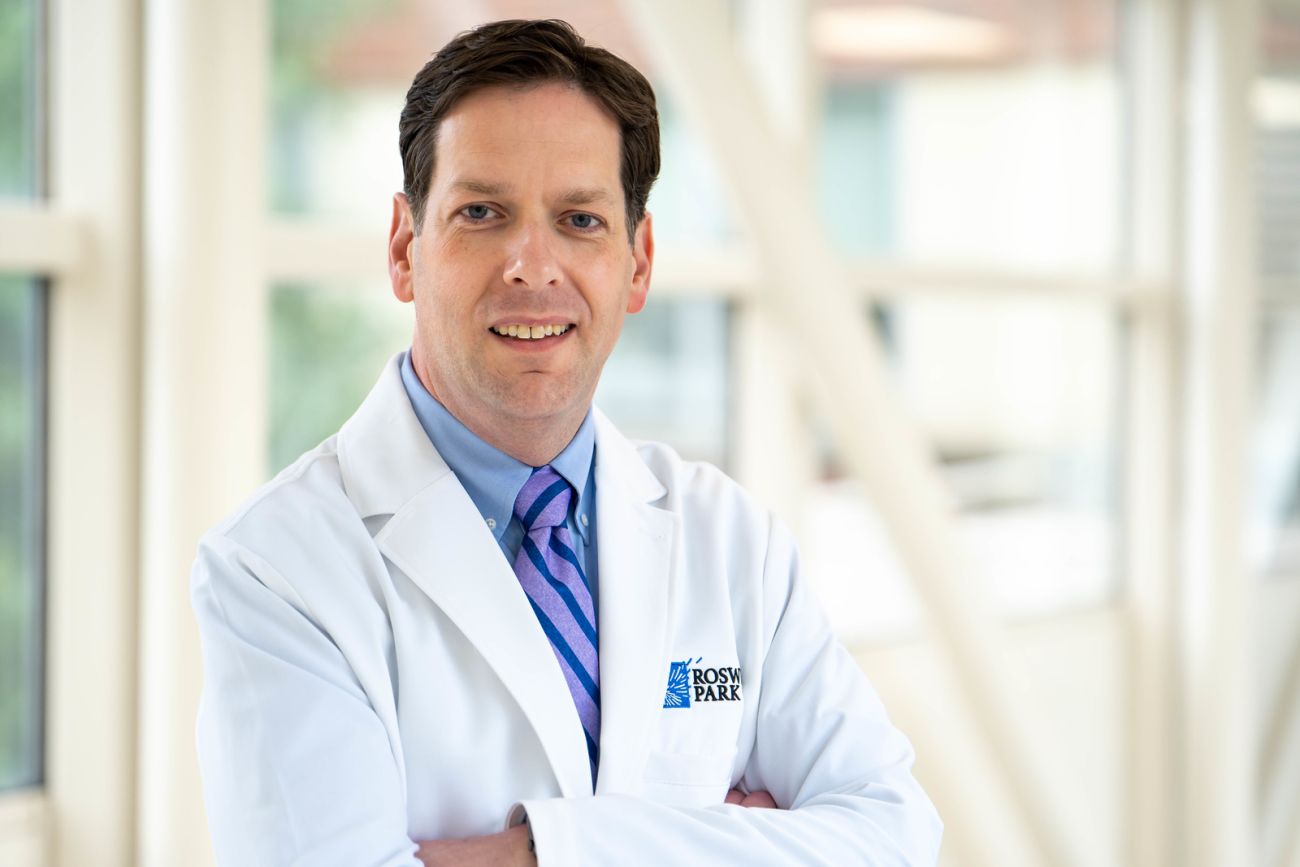Some hematologic cancers and disorders, including leukemia, certain lymphomas, myeloproliferative neoplasms and aplastic anemia are best treated by using stem cells that come from a healthy donor. An allogeneic transplant uses donor cells.
Finding a donor — What is HLA matching?
What makes a better match?
Typically, physicians aim to find a donor that matches 8 to 10 HLA markers with you. However, newer approaches give a higher priority to donor age because having a donor younger than 40 is an important factor to the success of the transplant.
If you need an allogeneic transplant, the search for a suitable donor will begin immediately and Roswell Park’s team will coordinate the search. The best donor for you is determined through a process called HLA Matching. Human leukocyte antigens (HLA) are proteins found on most of your body’s cells and your immune system uses these proteins to distinguish which cells belong in your body and which ones don’t.
Finding a donor whose HLA markers closely match yours makes it more likely that the transplant will be effective against your disease and less likely that you’ll have complications. Blood tests from you and potential donors will reveal how many HLAs match. A donor search usually begins by testing immediate members of your family and your biological parents and children will be a half-match, called haploidentical. But 7 of 10 people won’t have a close match in their family. Our team will search the national registry to find you a match.
How an allogeneic transplant works
After a donor has been identified, your transplant process will include:
- Conditioning chemotherapy. You will receive a few days of chemotherapy, which is intended to destroy the abnormal cells in your bone marrow
- Radiation therapy. You may also have radiation therapy as part of the conditioning before your transplant day.
- Stem cells are infused. Transplant day is called Day 0. You’ll receive your new healthy stem cells through an intravenous infusion that’s like receiving blood products.
- Post-transplant period. You’ll remain in the hospital for a period of about 60 days. During this time, you’ll receive treatments to suppress your immune system and prevent complications and you’ll be monitored to determine if the new stem cells are producing healthy blood cells.
- GOAL — your 2-year anniversary! The aim is for you to be in complete remission, off all immune suppression and fully re-vaccinated.
What Roswell Park does to optimize success
We use the latest treatment advances and strategies to improve how well the transplant fights your disease and reduce the risk for potential complications. These strategies include:
- Critical donor selection. We consider a variety of variables in addition to HLA matching to identify the most suitable donor for you. Roswell Park has special expertise in transplant for patients with donors who are not fully matched.
- Preventive treatment against GVHD and relapse. Preventive treatment begins within a week of transplant and tapers to day 60. This has resulted in reducing the risk for GVHD from about 40% to less than 10%.
- Early discharge post-transplant. We aim to reduce immune suppression as soon as feasible, which lessens risk for infection, improves transplant outcome and allows patients to safely return home sooner.
What is graft-versus-host disease (GVHD)?
This condition may occur with an allogeneic (using donor cells) stem cell or bone marrow transplant. It occurs when the new transplanted donor cells (graft) recognize your own body cells (host) as foreign and attack. This can result in skin rashes, gastrointestinal issues, liver problems, fatigue and other issues.
New approaches to preventing and treating GVHD have led to the condition becoming increasingly rare.

